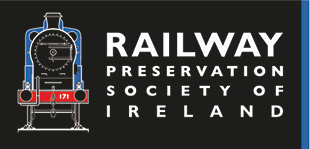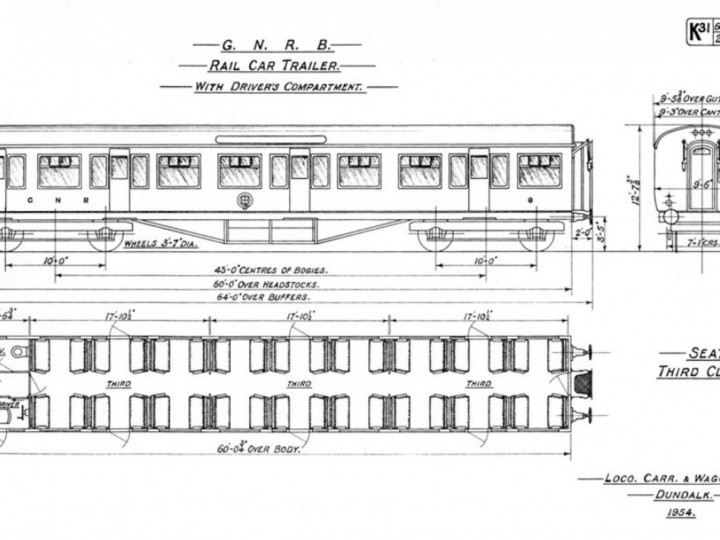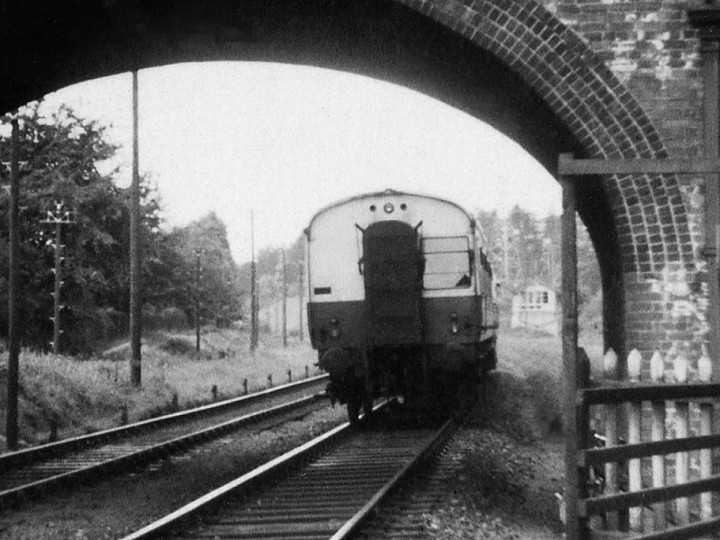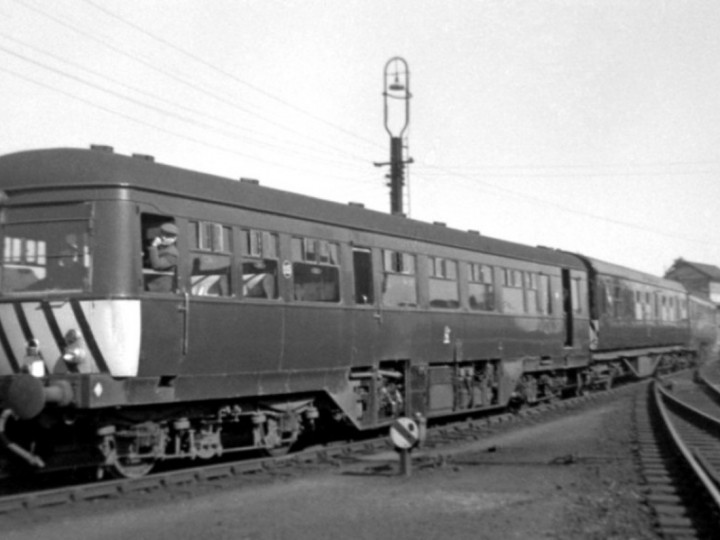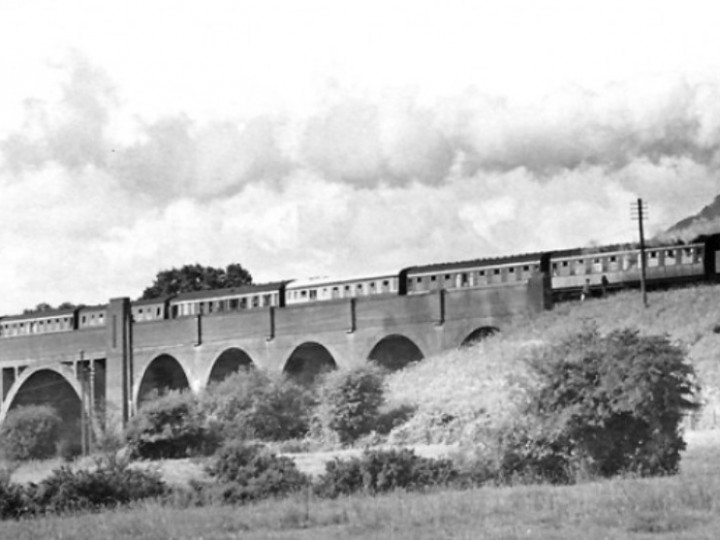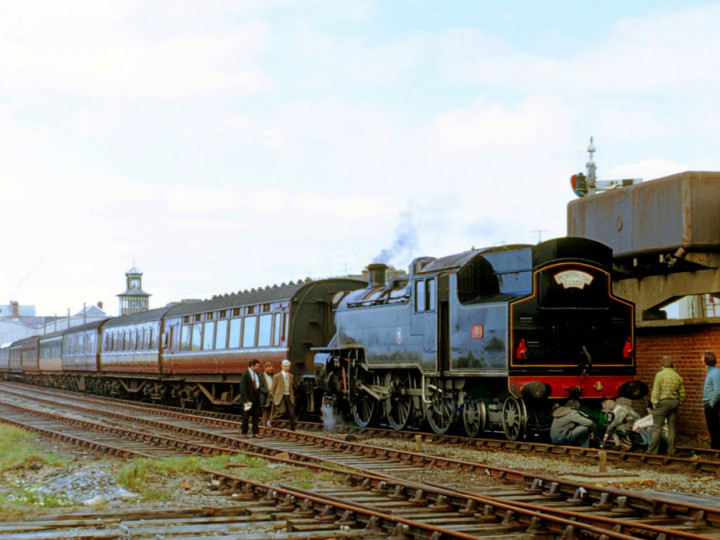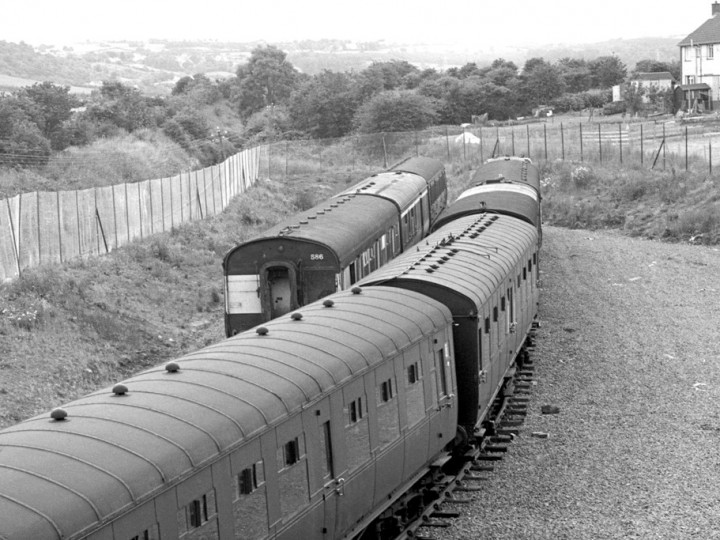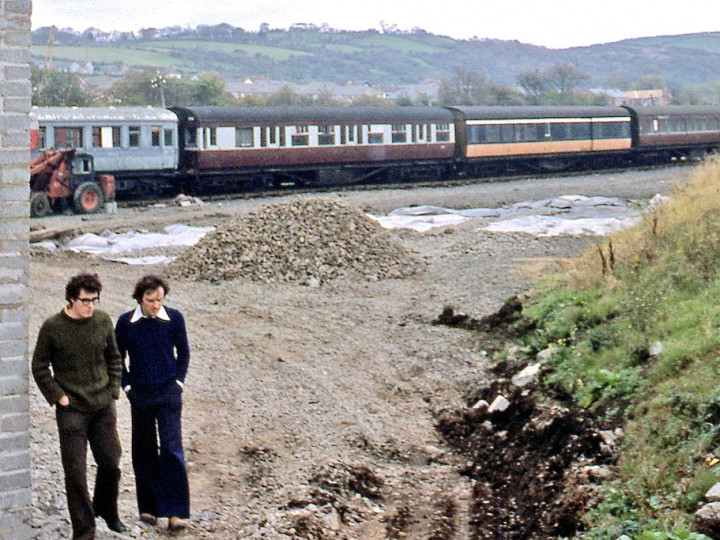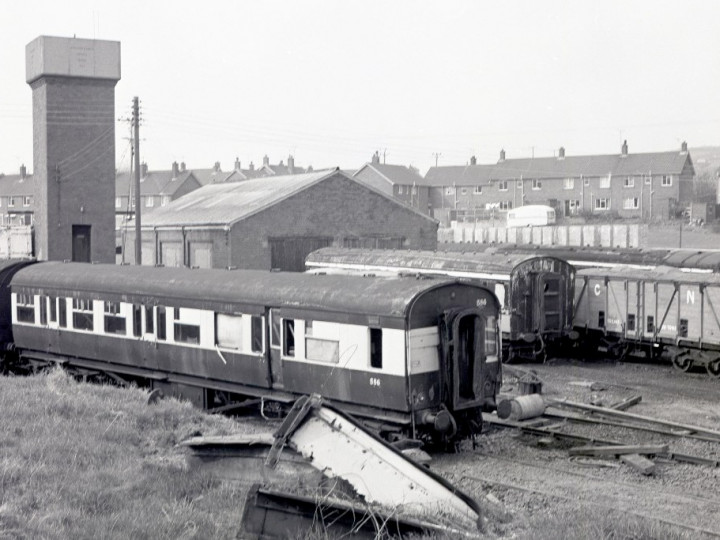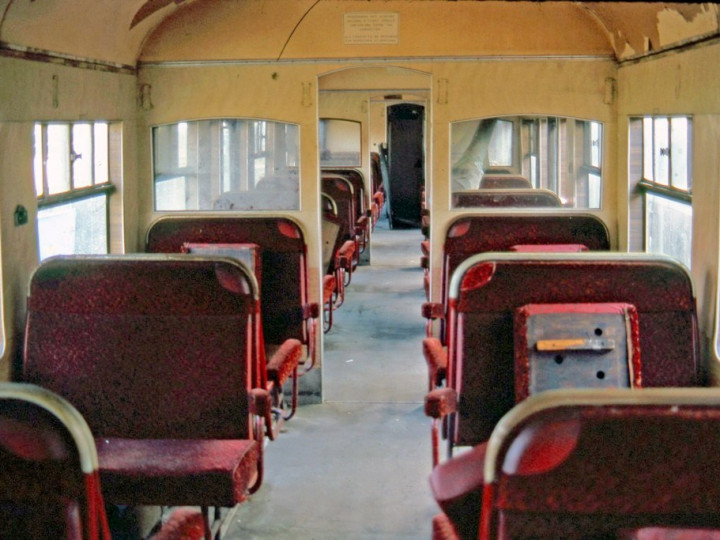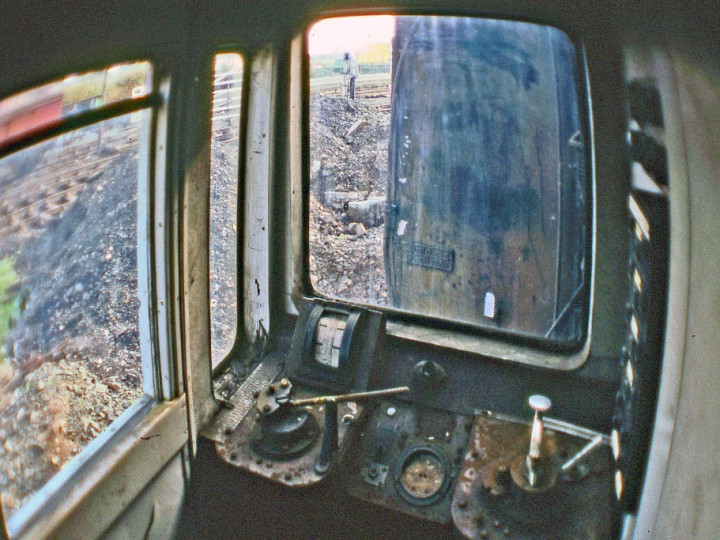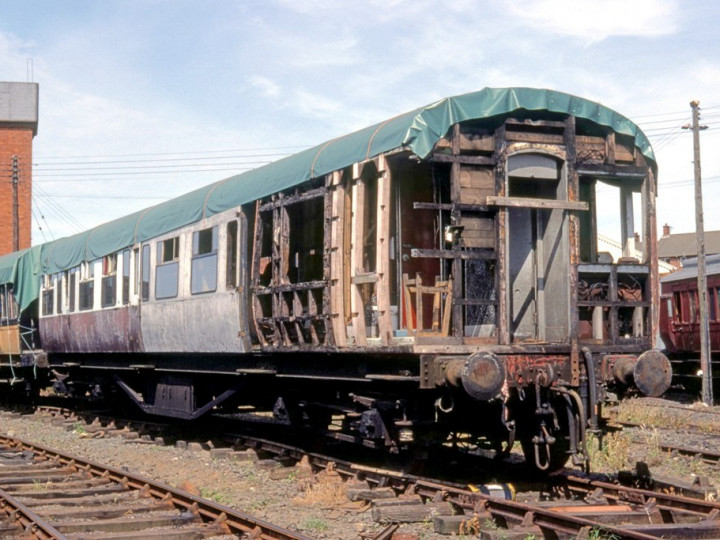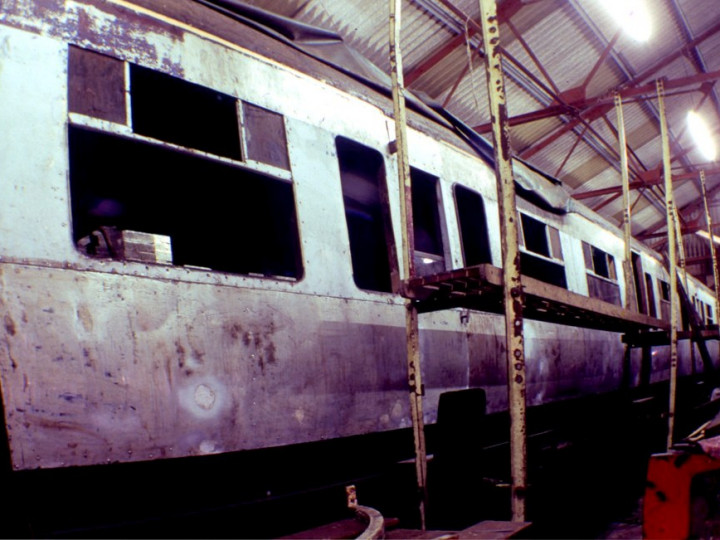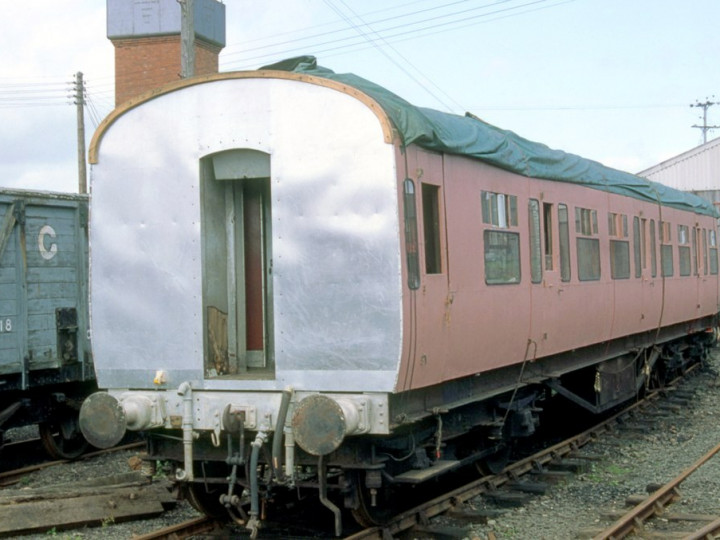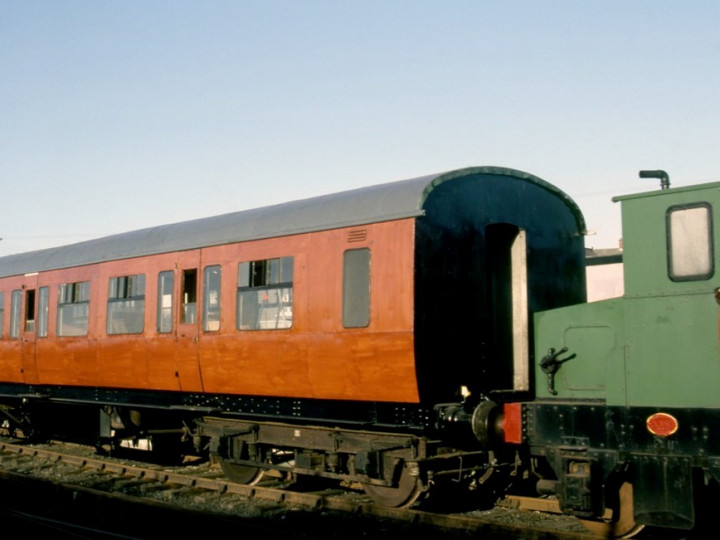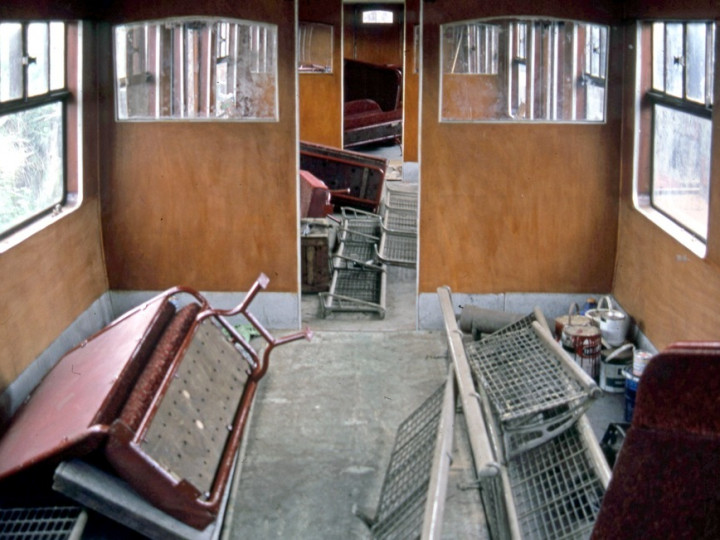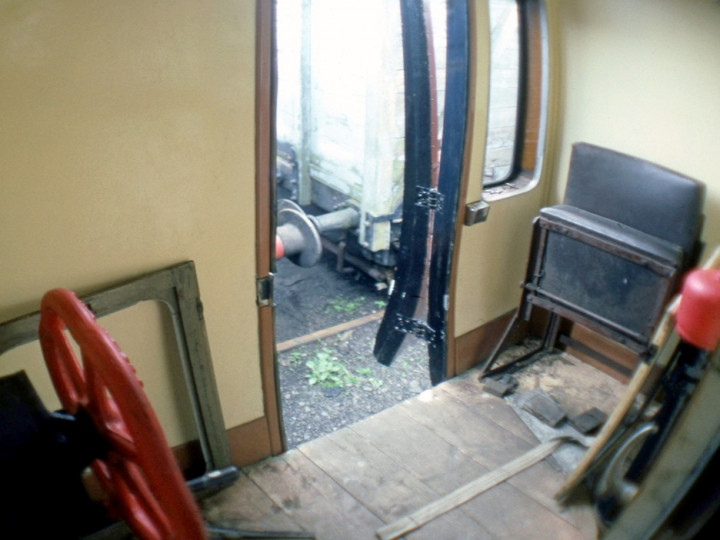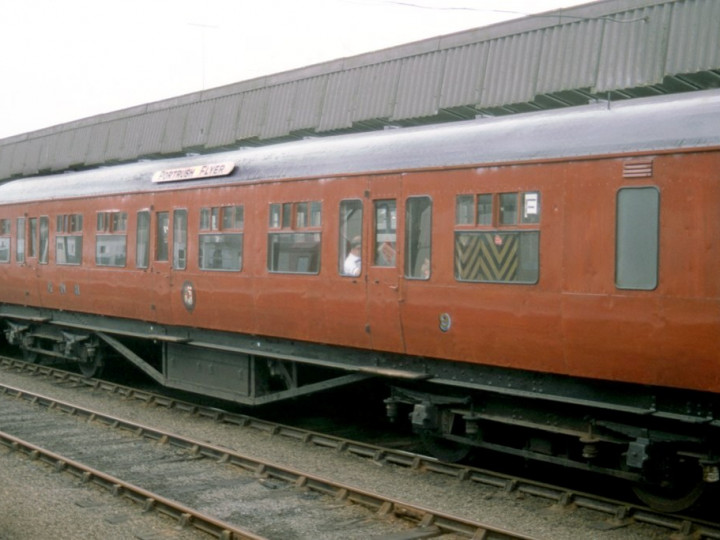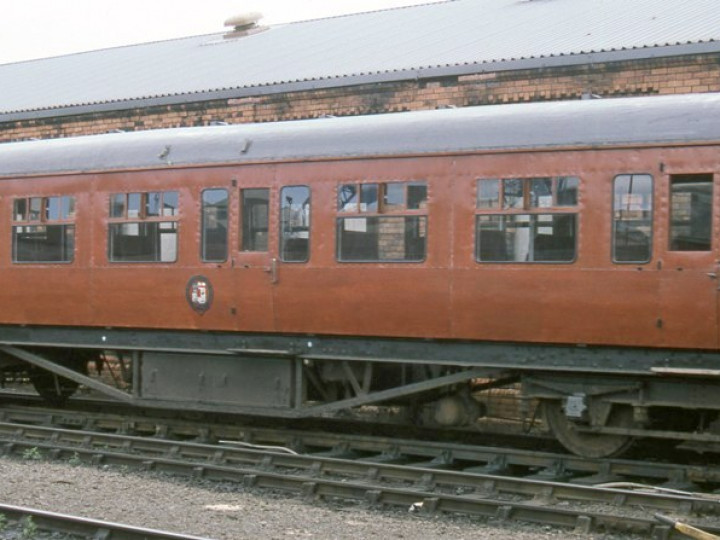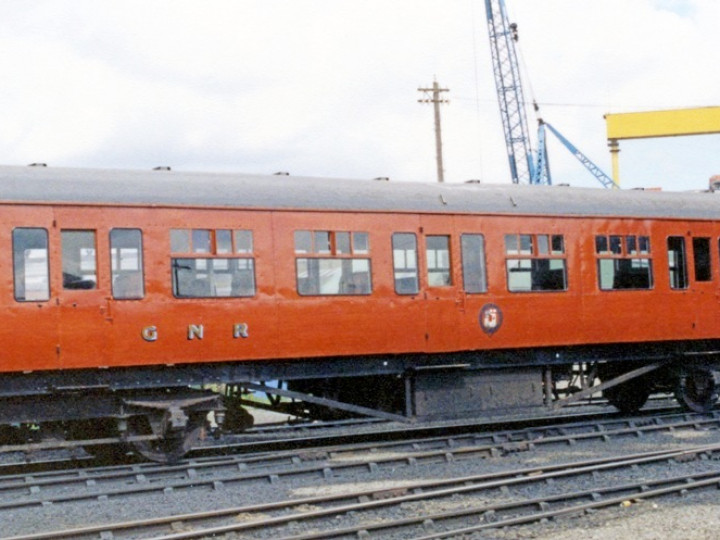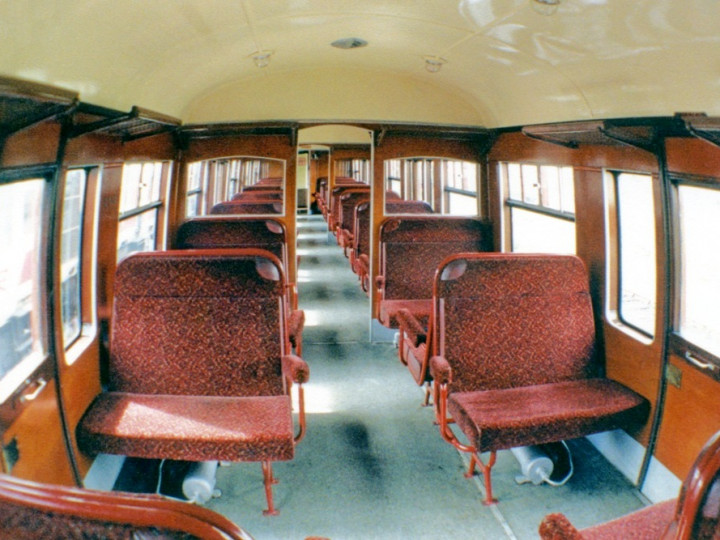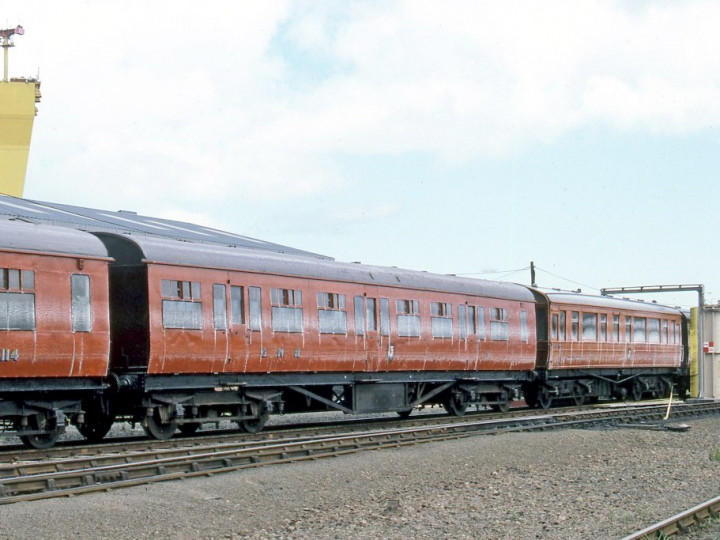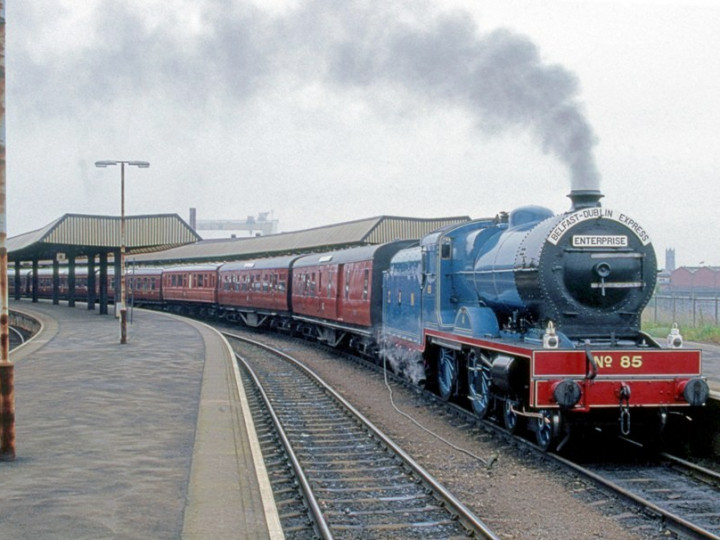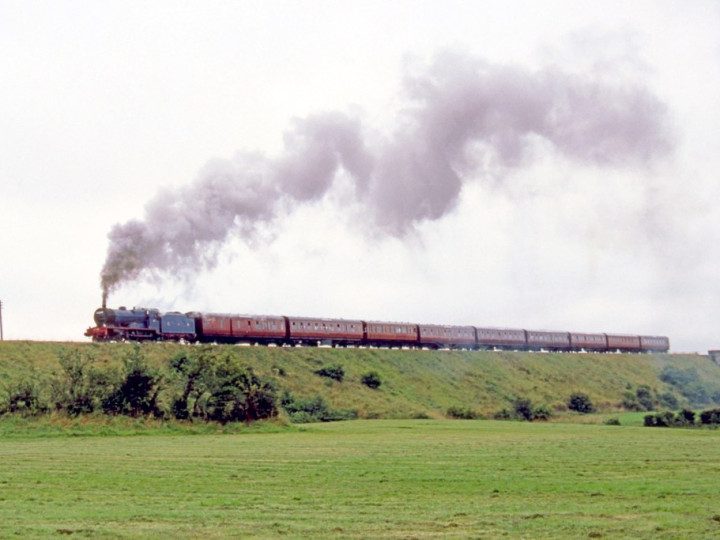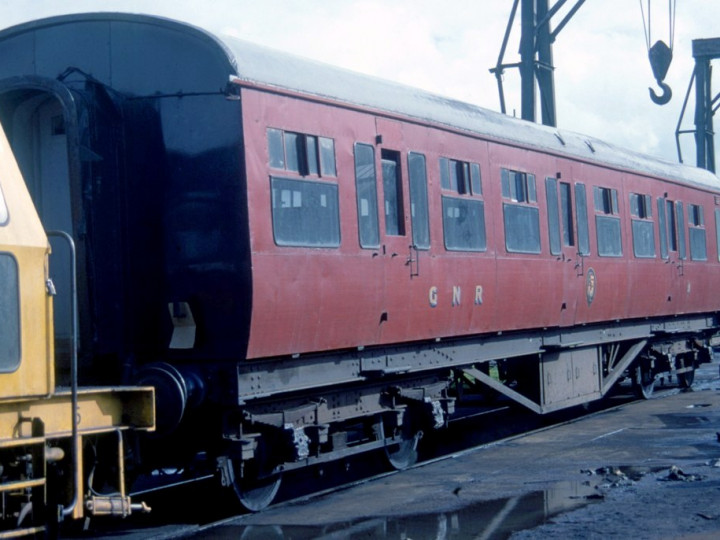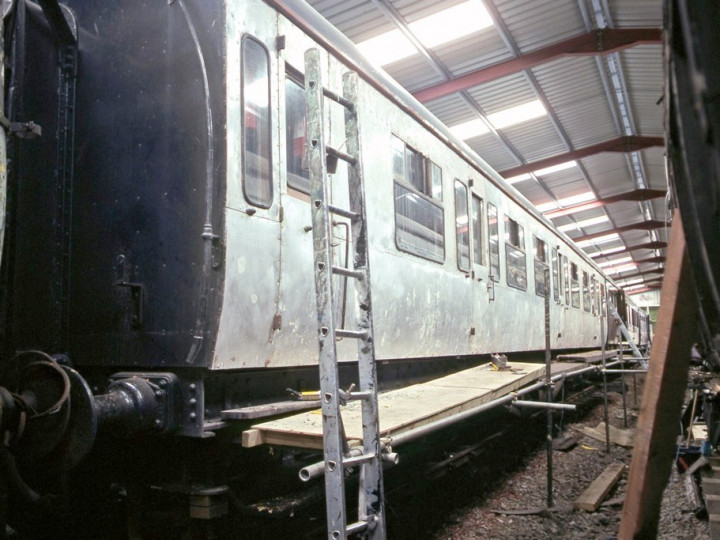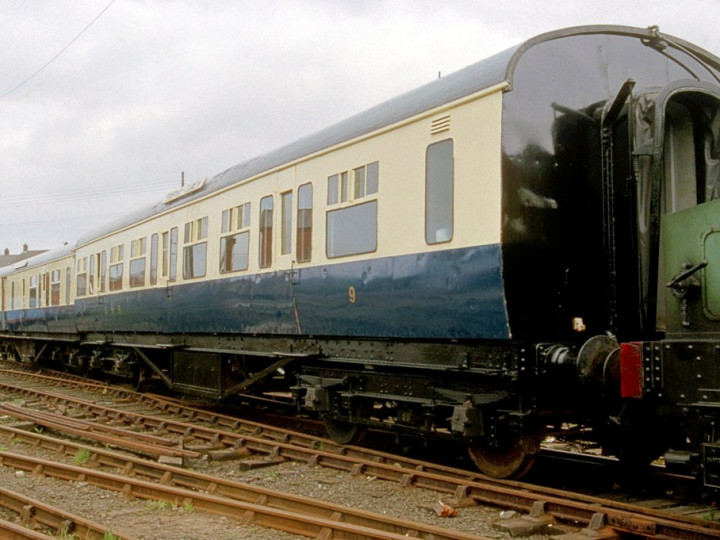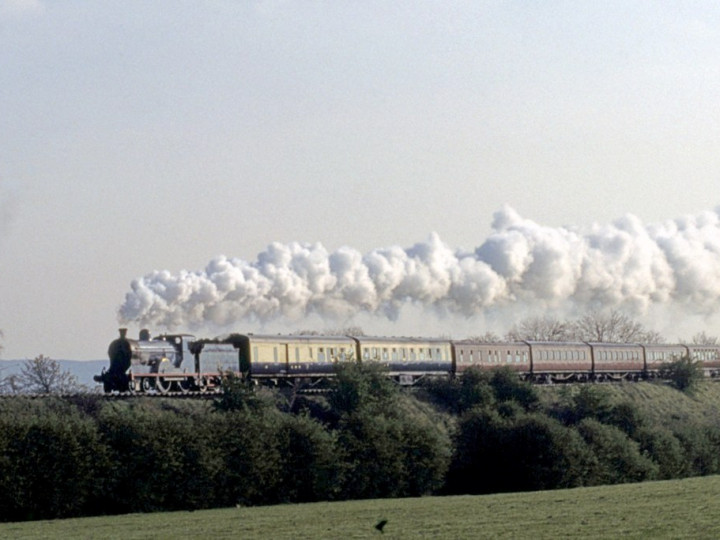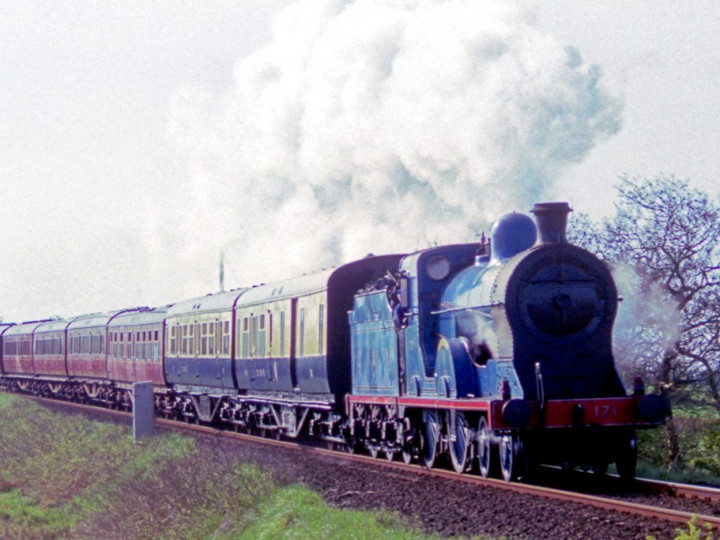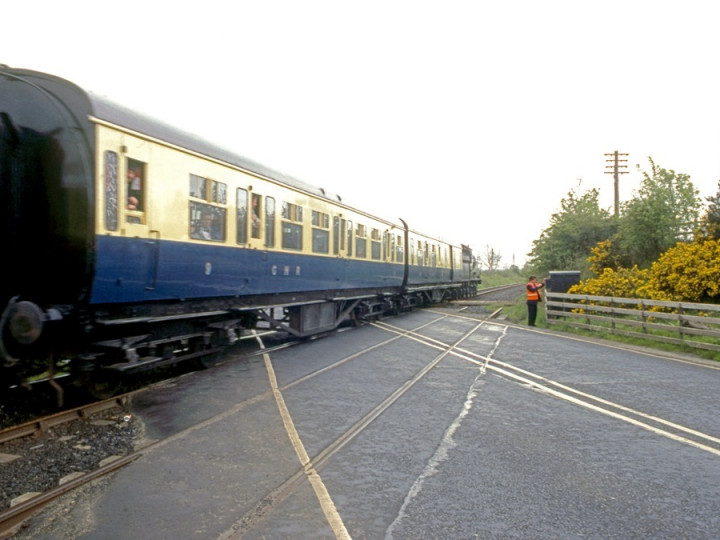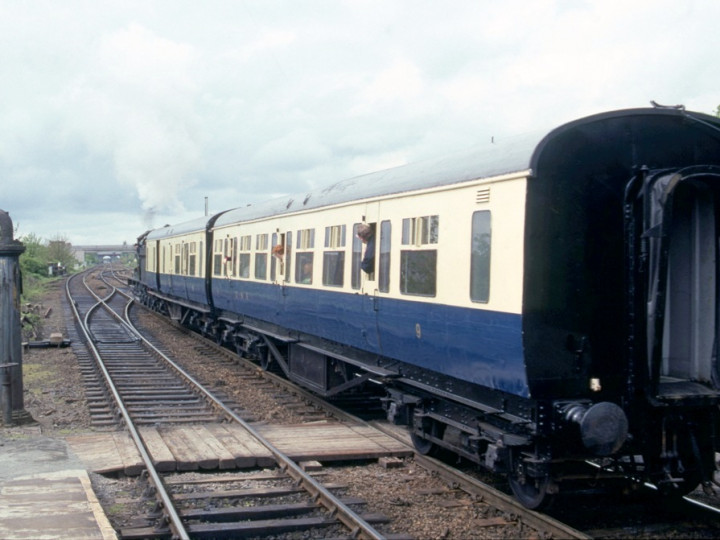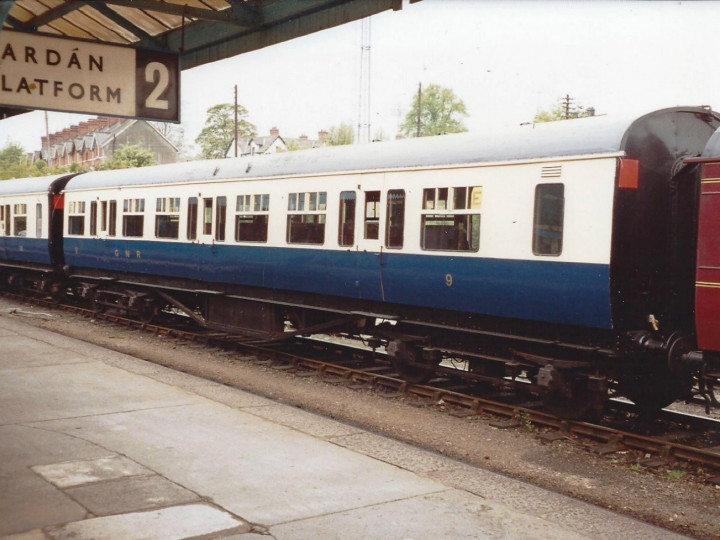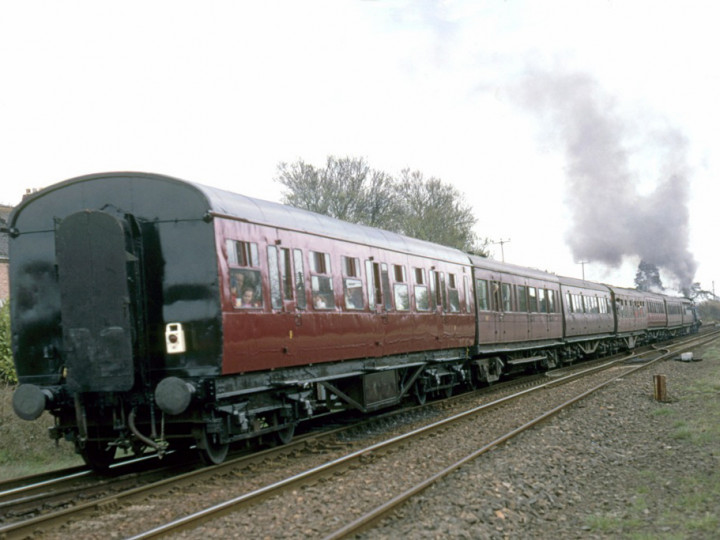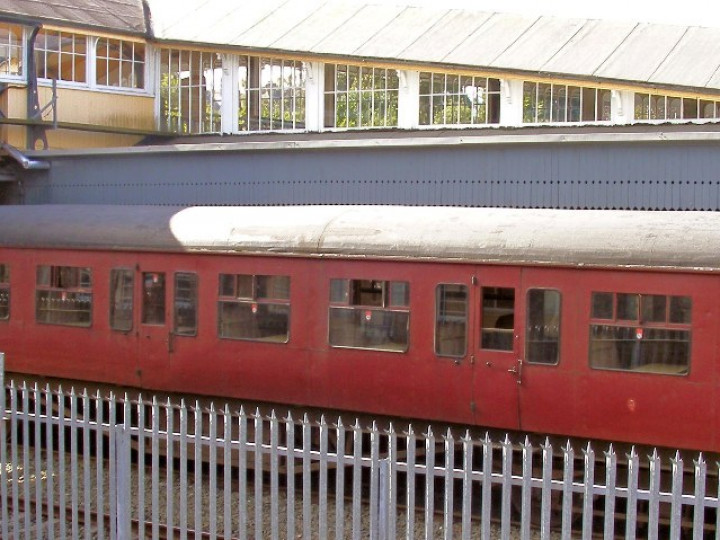GNRB
OPEN BRAKE THIRD 9
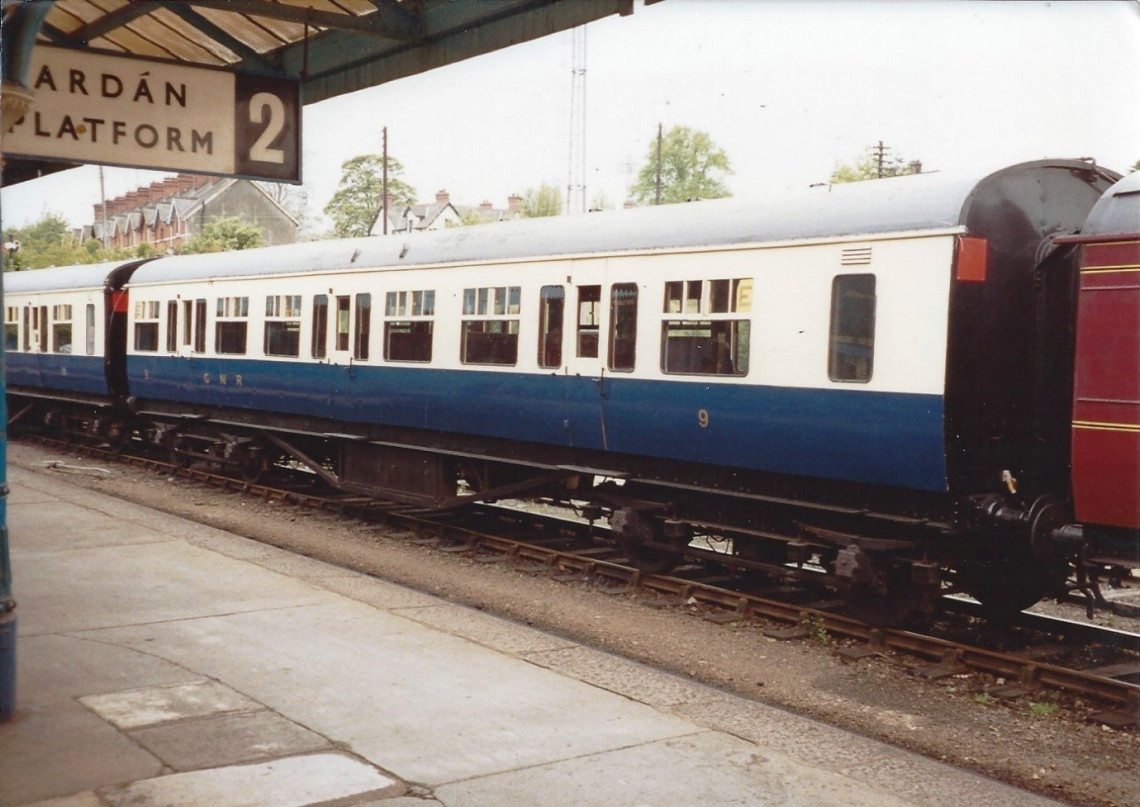
| Builders | GNRB, Dundalk, 1954 |
| Withdrawn | NIR, early 1975 |
| Companies | GNR(I), UTA, NIR, RPSI |
| Preservation Career | Main line use from 1975 |
| Current Location | Inchicore |
| Current Status | In storage |
A Brief History by Charles P Friel
Great Northern carriage No.9 is the last conventional carriage built at Dundalk.
It was one of two K31 class Driving Trailers which worked with AEC railcar power cars to form two-carriage trains. Driving Trailer No.8 entered traffic in March 1954 and our No.9 in April 1954.
Although looking very like the ubiquitous K15 Thirds, the K31 Driving Trailers were two feet longer in both wheelbase and body. While the K15s had four passenger doors on each side, the new K31s had only three plus a door, on one side, for the driver.
Internally, their layout was similar to the K15s - nine bays of four seats on either side of a central aisle but the K31s had only two bulkheads to the K15s' three. The K15s had only 70 seats because one seat (for two people) was missing at one end to allow access to the lavatory. The longer body of the K31s allowed for a reconfigured lavatory. It was on one side of a short corridor from the passenger saloon to the end door. On the other, left hand, side of that short corridor was the driving compartment which had a sliding door from the corridor and its own access door from the platform.
The driver had a good view of the road ahead through a large window in the end wall of the carriage. The driver's compartment was a variation of the AEC railcar cab with similar dials and gauges as well as a throttle, vacuum brake controls and a deadman's handle. There was a handbrake wheel mounted vertically behind the driver's padded and height-adjustable seat. The K31s had electric marker lights, headlights and a horn fitted to the driving end and the cab had an electric bell which the Guard could use to signal to the Driver to start or to confirm that a single line staff had been successfully exchanged.
Both Nos. 8 and 9 were sent to Belfast where their principal use seems to have been on the Antrim branch. After the signal cabin at Aldergrove closed, at the end of July 1956, the 5.15pm train from Antrim to Great Victoria Street was led by a two-car AEC railcar set with two ex-BNCR straight-sided carriages with a steam locomotive at the Antrim end; they were technically, banking the train.
At that time, No.23 RAF Maintenance Unit was based at Aldergrove, just a short distance from the station, and provided a lot of traffic. Thus the 5.15pm from Antrim was split at Aldergrove to allow for two 5.30pm departures. The steam portion returned north to Antrim and on to Ballymena while the diesel portion continued to Belfast (Great Victoria Street).
When the assets of the Great Northern Railway Board were divided in October 1958, the Ulster Transport Authority acquired both of the K31s. No.8 was renumbered N585 by the UTA while No.9 became N586.
Though the Antrim branch lost its passenger services on 12th September 1960, the K31s were to be found at work in both two- and three-car AEC sets working services from Belfast to Lisburn, Portadown or Newry. The cab ends of the K31s were given black and yellow "wasp" markings below the windows.
The other K31, No.8, as N585, was withdrawn the following March 1970 and scrapped that June.
K31 No.9, as N586, was taken out of regular service in September 1972 but did see some use on excursion trains, including our own Portrush Flyer. Right from the start, demand often outstripped the capacity of our six carriages – 861, four Bredins and the GN Diner 552. The solution lay in hiring carriages from NIR and ten of our first twelve Flyers in 1973, 1974 and 1975 had stengtheners added at York Road.
K31 N586 was hired for at least two Flyers and more information would be very welcome. It was on one such layover at Portrush that the horn and its controls managed to fall off the vehicle. They were re-used on recently-arrived Planet diesel No.23 – well, that’s the official story!
N586 was bought from NIR and arrived at Whitehead in late 1974 where there was big push to clear land alongside the Larne line for new carriage sidings which were first used in July 1977 and, of course, were full very soon!
With the popularity of public trains, the need for high-capacity carriages was growing and 586's 72 seats were a very attractive proposition. Work on restoring 586 to active service began in the Spring of 1983.
The stripping revealed extensive rot - all of the driving end, all of one side and about half of the other side had to have new structural members. The plan was to convert the driving cab into a small guard’s compartment and thus add a much-needed brake to our trains.
Work started outdoors, as it always did in those days, and by the start of August most the work at the structural work at the Belfast end was well in hand.
Most of the heavy work was carried out by two of our Action for Community Employment (ACE) workers. Some later work was done by the Whitehead Railway Project which was run by the Northern Ireland Action for the Care and Resettlement of Offenders (NIACRO). The males on the scheme learned carpentry, electrical and plumbing skills while working on our carriages under senior supervisor Frank Gallagher (himself the son an NCC engineman). The young ladies on the scheme learned office skills under the eye of Rita Craig. At one time, there were 22 trainees and four supervisors at Whitehead.
After work by NIACRO in No.5 road of the new engine shed, N586 was ready for painting by start of December 1984. Now restored to number 9, the livery chosen was a painted mahogany scumble effect. This was a medium brown base paint with the scumble effect achieved by drawing a wide floor brush lightly along the length of the wet scumble paint. The brush, of course, was both new and very clean!
The rejuvenated No.9 was on all of 1985’s Portrush Flyer trains and was one three GN vehicles in a non-stop special to Dublin with No.85 on 11th August to mark the 50th anniversary of the Enterprise Express.
On the day, the whole train look just magnificent and No.9 was the second vehicle in the train leaving Belfast. After very detailed and painstaking planning, the train reached Connolly non-stop - and early!
The consist was unchanged for the Steam Enterprise on 22nd August 1987 and No.9 continued to be a popular carriage on our Whitehead-based set for the next four years. However, it suffered a wheel flat when the handbrake had been applied but then forgotten, Ouch! The flats were attended to in York Road Works in early May 1992.
Once back in Whitehead, various maintenance jobs were undertaken in the new Carriage Shed and the brown scumble paint was stripped off. Seven years is the very most that one can hope for if a carriage is kept outdoors at Whitehead. A naked-looking No.9 and Brake second No.114 took up residence in roads 3 and 4 of the new shed where they were repainted into the GNR blue and cream livery which had first appeared with the AEC cars in 1950. The livery, though, was the UTA version with black ends which had been applied when the UTA painted the Royal Train of 1953. The carriages involved ran like that for some time, so there was a precedent for running steam-hauled blue and cream carriages.
The newly-painted pair appeared in the open on 17th April 1993 and very smart they looked too! After a run to Waterside and back for Michael Palin's Derry to Kerry programme for BBC tv, the two blue and cream set off for that year's big tour, the Sean Rί, behind No.461 on Saturday 1st May 1993. Sadly, the then-usual closely overhanging bushes and trees of the Antrim - Lisburn line did the paintwork no favours at all and left some of it looking like what antique dealers might call "distressed".
The blue and cream livery lasted until the Spring of 2001 when it was replaced by the standard RPSI maroon but without the yellow and black lining.
The ban on using wooden carriage stock north of the Border in early 2004 led to No.9 moving south to join the Dublin-based set. Irish Rail, it seems, required the vehicle to have a four digit number, so No.9 became 1949, quite close in number to several CIE Brake Standards from the 1950s. We last travelled in her on the Sea Breeze from Connolly to Rosslare Harbour, behind No 4, in August 2007.
I had my most recent sighting of No.9 on 28th September 2008. Dundalk was celebrating "Dundalk 50" to commemorate 50 years since the Works had left railway ownership. On that day No.186 worked a train from Whitehead and the Dublin-based set was diesel-hauled to Dundalk. In the evening, No.186 continued to Dublin (it was really a way of getting No.186 to Dublin) and the Whitehead-based set was worked home by an NIR GM. As well as two operating trains, the Society had three carriages on static display in the Enniskillen bay at Dundalk and 1949 was one of those on display.
It was appropriate that the last public appearance of the last carriage to be built in the Works was back in the town of its birth just over 54 years later.
The carriage is now at Inchicore.
